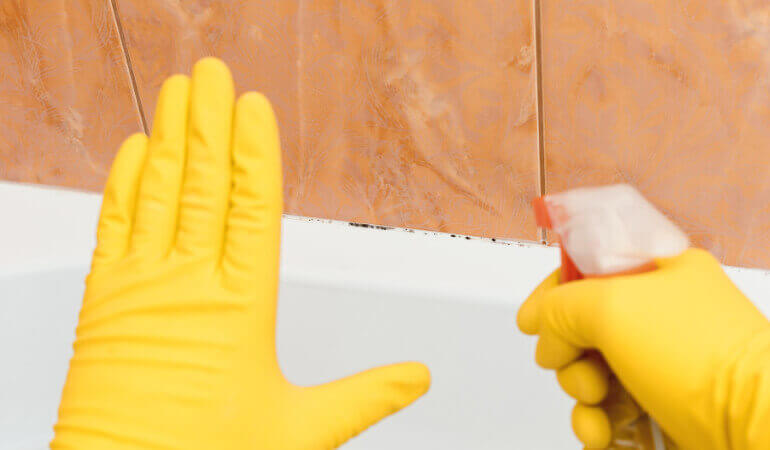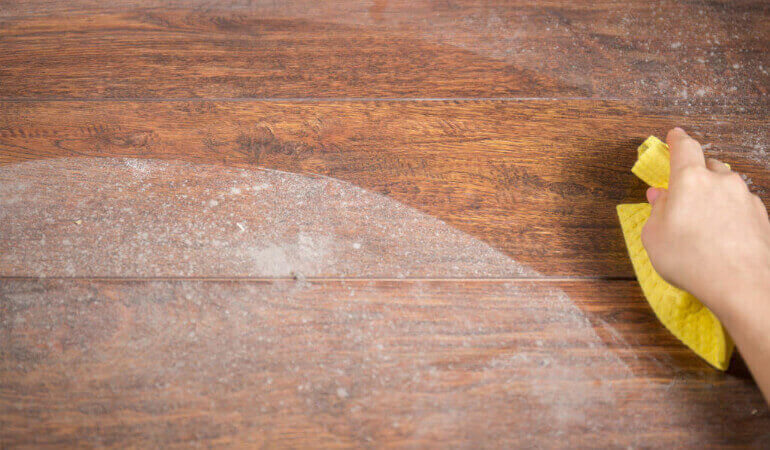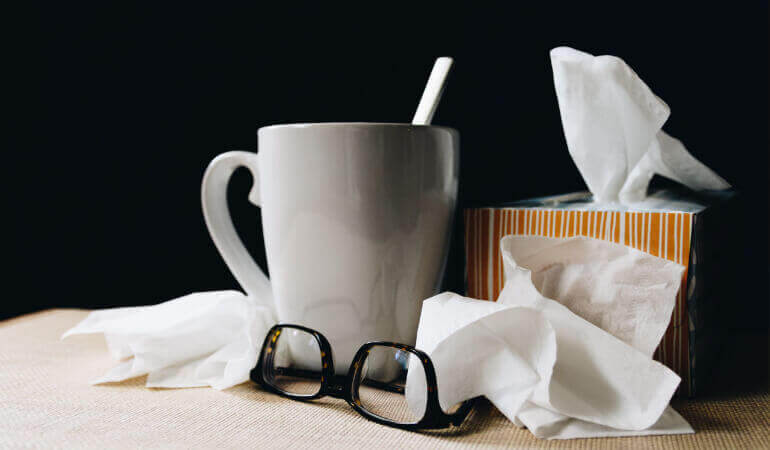

Mould and mildew can appear on walls or other surfaces such as floors and carpets. It’s important you tackle the root cause because living in a mouldy house is not good for your health. Luckily there are easy steps to remove mould and a number of ways to help prevent mould and mildew.
What is Mould?
Is a type of fungus developing from airborne spores. Usually appearing in damp, warm conditions where airflow is minimal. Bathrooms and lofts often suffer from mould. In most cases mould is caused by humid conditions and not enough ventilation. In some cases mould could be caused by plumbing leaks inside or outside of the house. Heating pipes not properly insulated can also cause a build up of moisture behind the walls.
What is Mildew?
The most common type of black mould on walls – spots that could spread over larger areas if not treated. Apply some bleach to the affected area with a cloth, if the dark colour fades after a few minutes you have mildew on your walls. Otherwise it could be just dirt.
Mould is the cause of allergic reactions and poor health, if you have an extensive problem with mould you should find expert help.
Mould in smaller area can be tackled by yourself but don’t forget to wear protective eyewear, gloves and a face mask. Always have the windows open or use a fan to ventilate the room.
How to Clean Mould on Walls
Make a solution of 1 part bleach to 3 parts of water.
Use a stiff bristled brush to scrub the blackened area.
Rinse thoroughly and leave to dry.
If this doesn’t work you can buy products specifically for mould and mildew. These are stronger, but never mix cleaning solutions together, this could cause dangerous chemical reactions.
How to Prevent Mould and Mildew
Once you cleaned the affected area, the next step is to prevent mould and mildew.
- Use a specialised product like an anti-microbial spray to prevent the spores from settling.
- Paint the walls with anti-mildew paint that can be purchased in any DIY store.
- Install an electric de-humidifier in areas that are affected the most. Also ideal for long term mould prevention. Indoor humidity levels should be 30-50% to prevent mildew build-up.
- Upgrade your home insulation as it could be the root of the problem. Properly insulated walls and ceilings will be less affected by condensation, and therefore not have problems with mould.
- Cut out the damp conditions in your home. Keep bathrooms, kitchens and other humid spaces well ventilated and dry.
- Spread out towels and shower curtains to dry.
- Tackle leaks as soon as possible to prevent moisture seeping into cavities and under floors.
- Don’t store linens, books or furniture in the attic or basement if you have problem with mould there.
- If you have tiling in your bathroom seal the grout lines every year to help waterproof your bathtub.
Clean mildew from shower curtain
Is your shower curtain dotted with mildew? Do you have plastic liner or washable plastic shower curtain? Use your regular washing powder or detergent to wash plastic curtain on the highest water level. To add an extra cleaning agitation add two or three bath towels. Leave to dry or put into your dryer on air only or low heat setting.
Fabric or decorative shower curtains should be washed according to the instructions on the care label. If you just want to freshen them up why not pop them into your dryer on air dry setting together with a fabric softener sheet.
Clean mildew from wood surfaces
Use the soft brush attachment to vacuum the loose mildew spores from wood cabinets, paneling or furniture. Clean the affected areas with well-wrung cloth dipped in soapy water. Rinse with a clean damp cloth and immediately dry with a fan. If you oversaturate the wood, it could damage the finish and warp.
How to eliminate or reduce the source of mould on your ceiling
You should deal with mould as soon as you notice it to prevent permanent damage to your ceiling. Before you clean the mould you should identify and fix the source of the mould, here’s how.
Check your roof for a possible leak
Most common cause of ceiling mould is leaky roof, unless you repair the leak, the mould will keep returning.
How’s your circulation and ventilation
The most common places where mould develops are kitchen and bathroom because they don’t have proper ventilation. Invest into extractors to release the moisture or fans to circulate the air.
Increase natural light
Dark spaces are the best for mould so keep the curtains and windows open to let the sunshine in.
Improve your home insulation
Mould growth is encouraged by poor insulation because of condensation. Condensation is caused when cold air from the outside meets warm air from the inside. Once you improve your home insulation you’ll create a barrier and reduce mould growth.
Use dehumidifiers in kitchen and bathroom
Because your kitchen and bathroom is warm and damp it encourage mould growth. Put dehumidifiers in your kitchen and bathroom to remove humidity from the air.
Keep the door open after showering
Leave the bathroom door open the the extractor fan on for at least 15 minutes after showering to allow the humidity in your bathroom to escape.
Don’t hang your towels in the bathroom
Because wet towels will add more humidity to already damp bathroom. Hang your towels to dry in another room to reduce mould growth conditions by keeping the humidity levels at minimum.
It’s common that mould and mildew appear again so don’t panic. Now you know how to deal with it.


